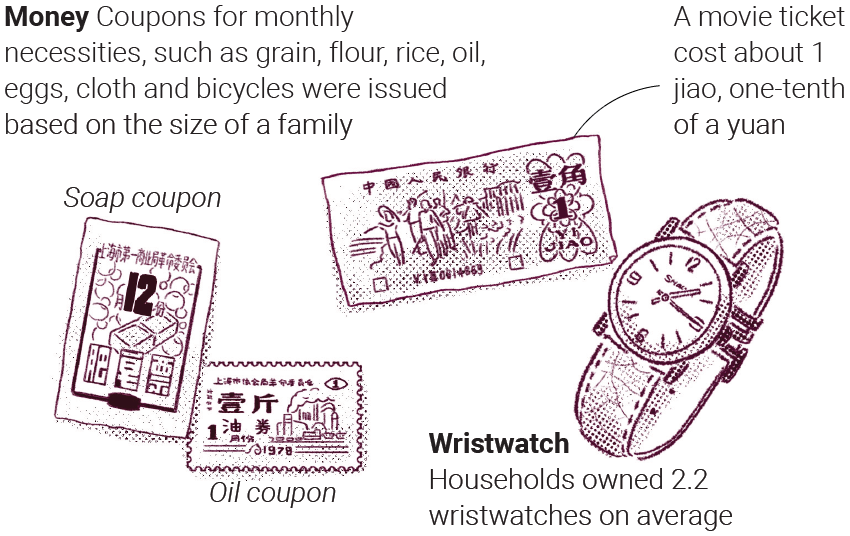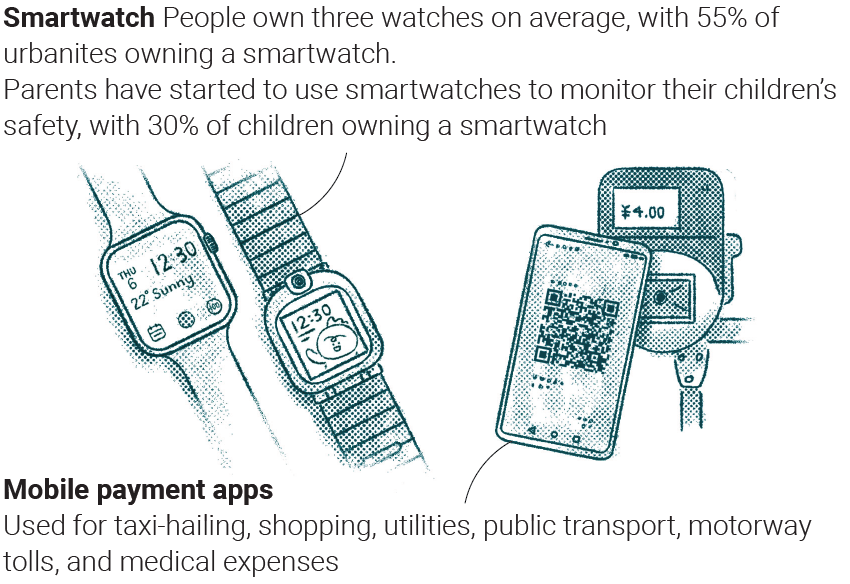People had disposable income and could purchase goods beyond their basic living requirements. Stylish clothes, modern furniture and advanced electrical appliances become realistic aspirations for ordinary families for the first time. Here, we explore the magnitude of the measures by comparing urban families 40 years after the opening up of the Chinese economy
Impact on families

Family in 1978
Family in 2018
Beijing encouraged one-child households with the government implementing it as policy in 1980. Financial incentives and preferential employment opportunities were provided to those who complied and contraceptives were often provided by the state. But in some regions many people endured harsh punitive measures, such as forced sterilisations and abortions
China announced the decision to relax the one-child policy in November 2013. Couples were encouraged to have more children, partly in response to China’s ageing population. Long-term unintended consequences of the policy included a decline in the number of females born in China (in 2016 there were 33.59 million fewer women than men), a population that was ageing too rapidly, and a shrinking workforce
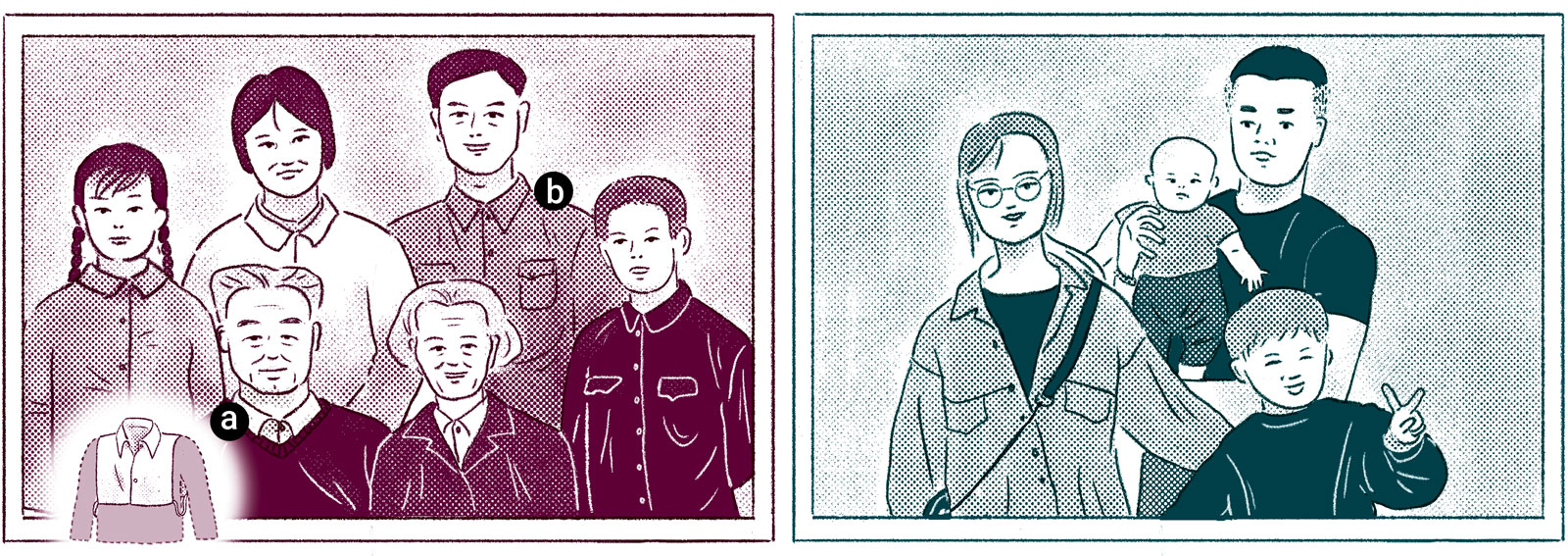
a. Fake shirt fronts were popular to extend a shirt’s lifespan
b. The “welcoming guest dress”, with a turn-down collar was very common from the mid-1960s towards the end of the 1990s. These were usually solid blue or grey in colour
From the 1990s many western brands aimed their goods at the Chinese consumer market. Advertising promoted these luxury items in fashion magazines, newspapers, and on television stations. Foreign trends in customs were introduced very quickly. Western lifestyles and dressing trends have become more acceptable over the years
Family in 1978
Beijing encouraged one-child households with the government implementing it as policy in 1980. Financial incentives and preferential employment opportunities were provided to those who complied and contraceptives were often provided by the state. But in some regions many people endured harsh punitive measures, such as forced sterilisations and abortions
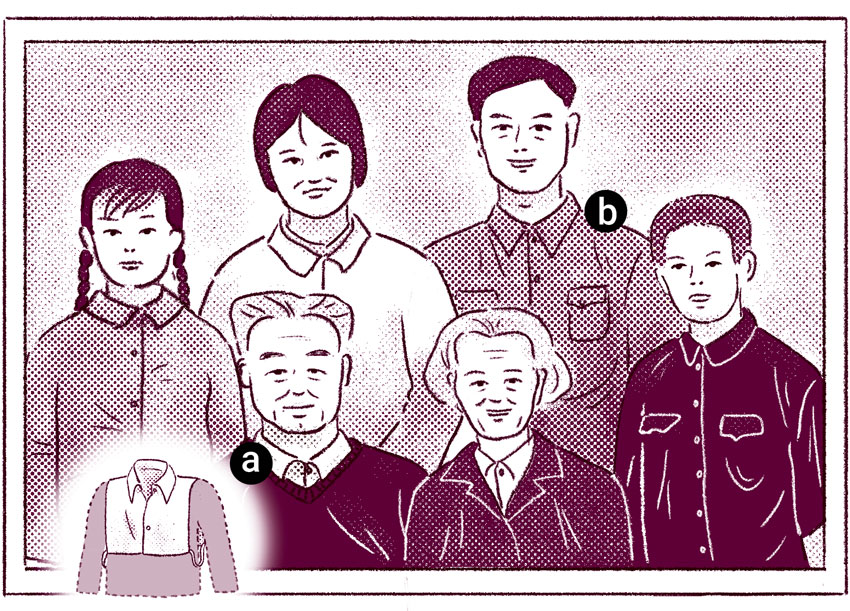
a. Fake shirt fronts were popular to extend a shirt’s lifespan
b. The “welcoming guest dress”, with a turn-down collar was very common from the mid-1960s towards the end of the 1990s. These were usually solid blue or grey in colour
Family in 2018
China announced the decision to relax the one-child policy in November 2013. Couples were encouraged to have more children, partly in response to China’s ageing population. Long-term unintended consequences of the policy included a decline in the number of females born in China (in 2016 there were 33.59 million fewer women than men), a population that was ageing too rapidly, and a shrinking workforce
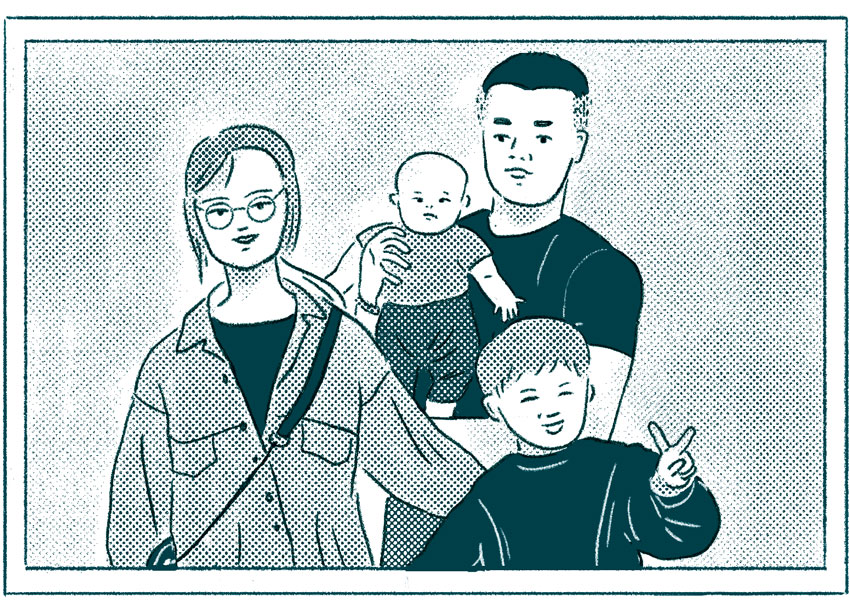
From the 1990s many western brands aimed their goods at the Chinese consumer market. Advertising promoted these luxury items in fashion magazines, newspapers, and on television stations. Foreign trends in customs were introduced very quickly. Western lifestyles and dressing trends have become more acceptable over the years
Objects of everyday life
During the Cultural Revolution, Chinese citizens aspired to the “three bigs” – a bicycle, a wristwatch and a manual sewing machine. By the early 1980s half of all Chinese households owned at least one of these former “three bigs”, and by the mid-1980s a “new three bigs” had evolved – a refrigerator, a washing machine, and a television set
Later, a “new big six” added cassette recorders, electric fans, and motorcycles. These were followed by the “eight new things” that upgraded black-and-white television sets to colour sets and added cameras and video recorders to the growing list. Demand for the traditional consumer durables such as sewing machines, watches and bicycles that began their popularity in the 1960s grew slowly during the 1970s, mainly as the result of supply restrictions
Inside the house
Clothing
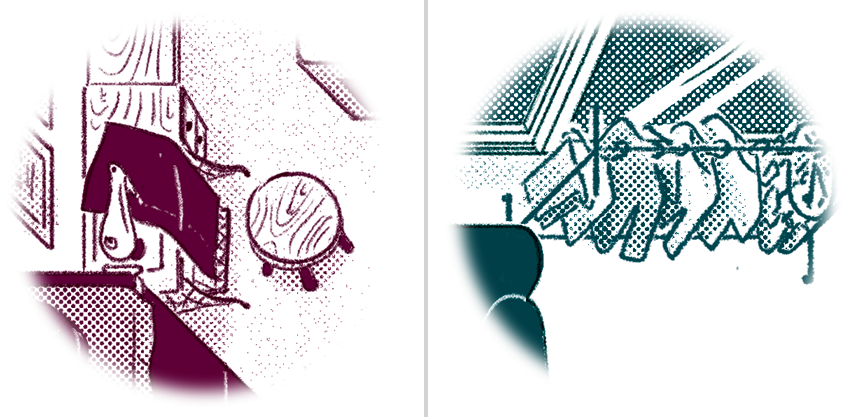 Before: Over 70% of families owned a manual sewing machine. Annual household spending on clothing was just 14.8 yuan
Before: Over 70% of families owned a manual sewing machine. Annual household spending on clothing was just 14.8 yuan
Now: Today, urban households spend 3,316 yuan annually on clothing, 224 times greater than 40 years ago
Ventilation
 Before: Only around 20% of urban households owned an electric fan
Before: Only around 20% of urban households owned an electric fan
Now: 90% of homes are air-conditioned
Communication
 Before: The telegraph, the telephone and letters were the primary sources of communication
Before: The telegraph, the telephone and letters were the primary sources of communication
Now: The number of internet users in China hit 802 million this year
Laundry
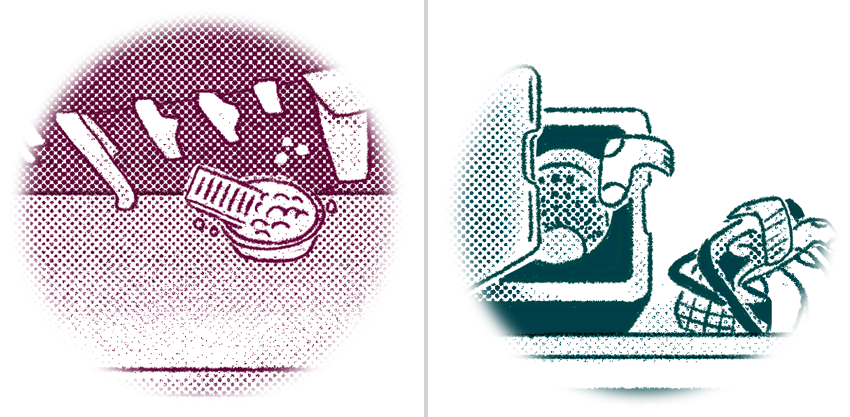 Before: Laundry generally done by hand; household appliances were rare
Before: Laundry generally done by hand; household appliances were rare
Now: 89% of homes have a washing machine
Entertainment
 Before: 85% of families owned a radio but only 32% could afford a black-and-white television set
Before: 85% of families owned a radio but only 32% could afford a black-and-white television set
Now: There is an average of 1.2 colour televisions per family
 Before: Picture books were aimed at petty officials, workers, and peasants alike. The books began to disappear in the mid-1980s due to steadily rising literacy rates and access to broadcast media
Before: Picture books were aimed at petty officials, workers, and peasants alike. The books began to disappear in the mid-1980s due to steadily rising literacy rates and access to broadcast media
Now: More than 95% use mobile devices to go online
Transport
 Before: Bicycles were the most common mode of transport, with an average of 1.2 bicycles per family
Before: Bicycles were the most common mode of transport, with an average of 1.2 bicycles per family
Now: 27.7% of families own a car

Purchasing power
The growth of the average wage for urban workers and the changes in the number of public holidays mean citizens now have more leisure time
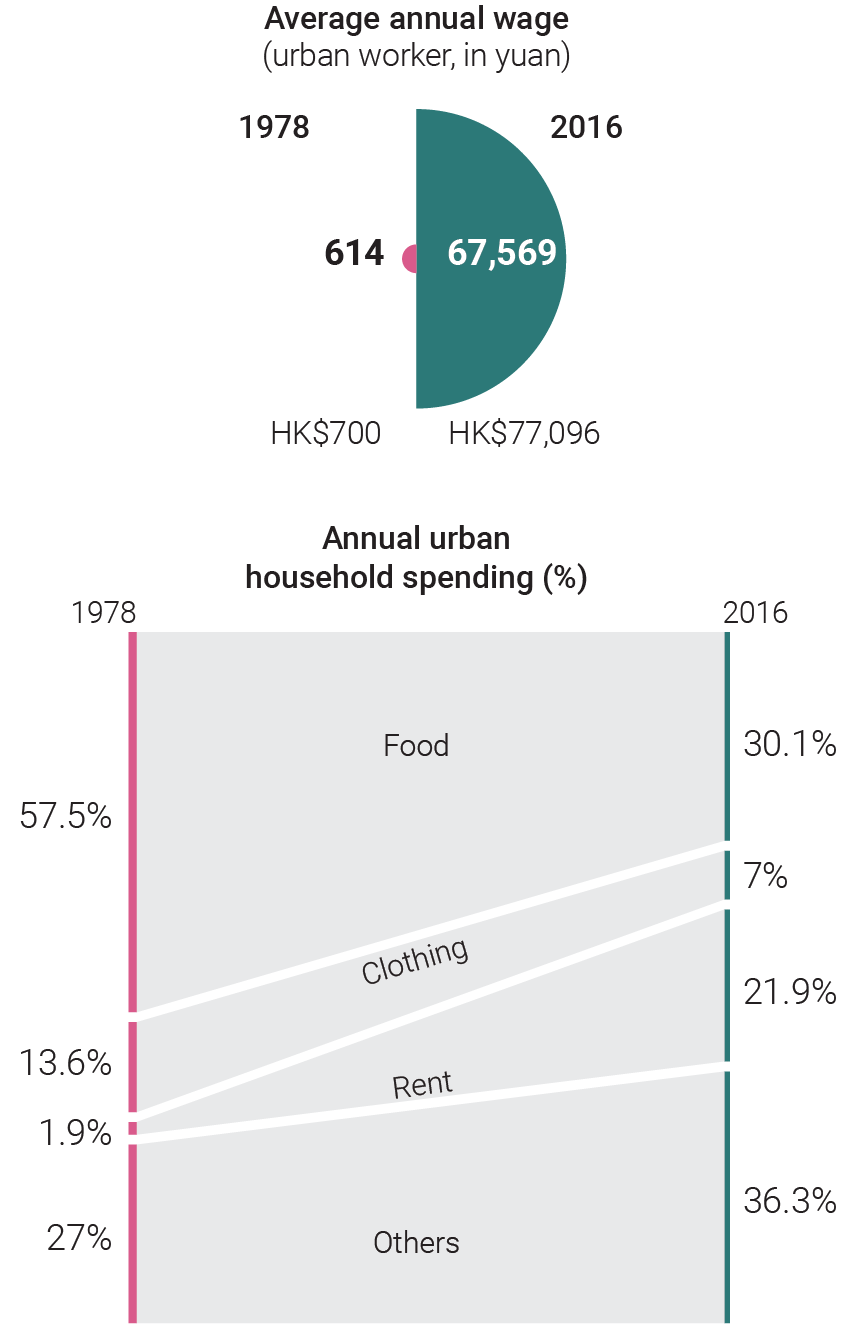
China’s consumer habits have changed rapidly in recent years. To put this into context, it should be considered that in 1999 when the economy was based on low-end manufacturing and infrastructure projects, the average annual salary was US$1,000. As the economic model evolved, the average annual salary rose to US$10,000 and consumers' purchasing power increased, boosting the economy in new ways. The service industry is now the largest sector with domestic consumption accounting for over 50 per cent of China’s GDP growth









